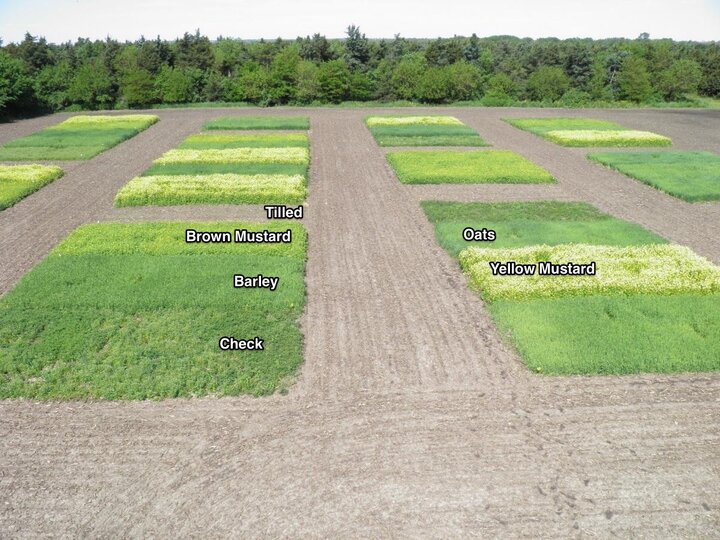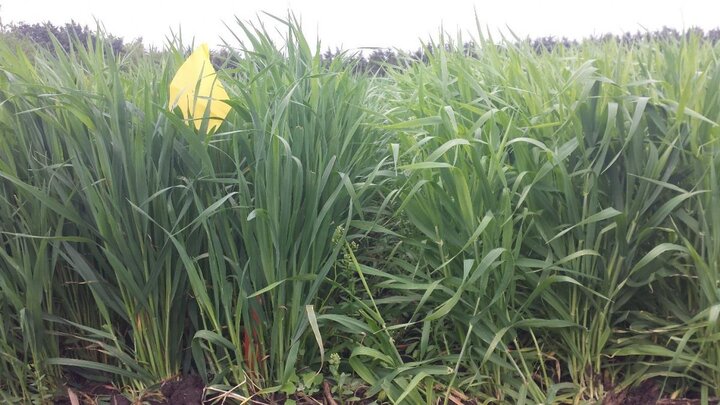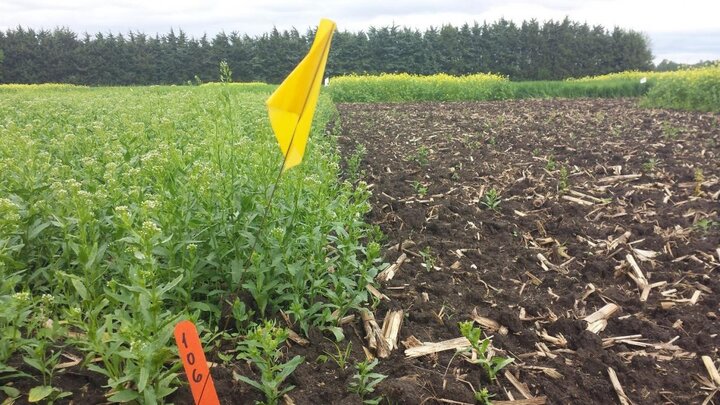Weed control in organic soybean usually includes frequent pre-plant tillage operations but spring rains often make it difficult to get into the fields for timely tillage. As a result, weed pressure can be high. Cover crops can help suppress weeds, but after corn harvest it is often too late to establish cover crops. Spring-planting cover crops may be an alternative to fall-planting. In this study, our objective was to test the effectiveness of cool-season cover crops in suppressing weeds before and after soybean planting.
What was the experimental set-up?
The experiments were carried out in 2017, 2018, and 2019 at the Eastern Nebraska Research and Extension Center (ENREC) near Mead in fields managed organically. The experimental design was randomized complete blocks with four replications. The whole field was disked before cover crop planting. There were four cover crop treatments: barley, oat, brown mustard, and yellow mustard which were planted in plots measuring 20 by 40 feet in late March to early April (Table 1). Barley and oats were drilled at 120 lb/ac in 7 inch rows. The mustards were broadcast at 14 lb/ac and followed by passes with a multipacker. There were two check treatments: no-cover crop plots that were tilled for weed control (Tilled), and a no-cover crop, no tillage “weedy” check (Check) treatment (Figure 1). Tillage in the ‘Tilled’ check plots consisted of two to three passes with a disk pre-plant, and three to four passes with a row cultivator post-plant soybean. We sampled cover crop and weed biomass in late May, just before cover crop termination. Cover crops were terminated by undercutting with a sweep-plow set to a depth of about 3” in late May. With this method, cover crop residue remained on the soil surface as mulch. Soybean were planted within one week. In mid-July, we sampled weed biomass along with soybean biomass as an indicator of soybean performance.

How productive were spring-planted cover crops?
Cover crops were most productive in 2017, with around 2,800 lb/ac of biomass (Fig. 2, 3, 5). They were least productive in 2018, with only 600 lb/ac of biomass, due to the cold and dry spring in that year. In 2017, barley and oats had significantly higher biomass than the mustards (Fig. 2, 3), but in the other years, all species produced similar amounts of biomass.



Did cover crops suppress weeds before they were terminated?
Weed suppression from living spring-planted cover crops was comparable to weed control by pre-plant tillage in the ‘Tilled’ check plots in 2017 and 2019 (Fig 4, 5). The different cover crop species were similarly effective at inhibiting weeds in 2017 and 2019. In 2018, the cold and dry spring delayed cover crop growth. Low cover crop biomass, coupled with high existing weed pressure in this field, led to high weed biomass in all plots, even the ‘Tilled’ check plots (Fig. 5).
Did cover crops suppress weeds after they were terminated?
Oats and brown mustard plots continued to have some weed suppression after they were terminated (Fig. 6), likely due to their residue on the soil surface. But, they did not control weeds as well as cultivation. The other cover crops did not provide weed suppression past their termination.


How did soybean perform?
Soybean biomass in the cover crop plots and the weedy check was similar (Fig. 6). These treatments had much lower biomass than the tilled check. Remember, that in our experiment, there was no additional weed control in the cover crop plots, and the high weed pressure reduced the growth of soybean.
Take-home message
Spring-planted cover crops may be as effective as tillage in controlling weeds pre-plant soybean, but they cannot replace post-plant cultivation for weed control. Further research is needed in organic systems on how timing and method of cover crop termination impact weed suppression, and how post-plant tillage can be combined with cover cropping.
Other benefits from spring-planted cover crops may be early season erosion prevention, increased nutrient cycling and a food source for pollinators (think brassicas), and these benefits should be part of the decision making process.
If you have further questions, please contact Katja Koehler-Cole: kkoehlercole2@unl.edu.
Funding for this study was provided by the Organic Crop Improvement Association.
| Activities | 2017 | 2018 | 2019 |
|---|---|---|---|
| Cover crop planting | 21-Mar | 2-Apr | 29-Mar |
| Cover crop and weed biomass sampling | 18-May | 23-May | 31-May |
| Cover crop termination | 26-May | 23-May | 31-May |
| Soybean planting | 2-Jun | 24-May | 2-Jun |
| Soybean and weed biomass sampling | - | 10-Jul | 23-Jul |

